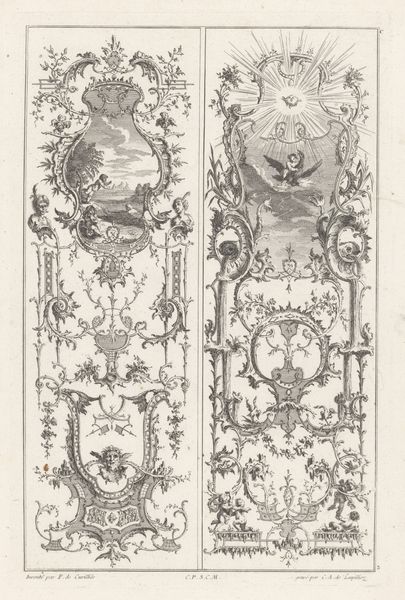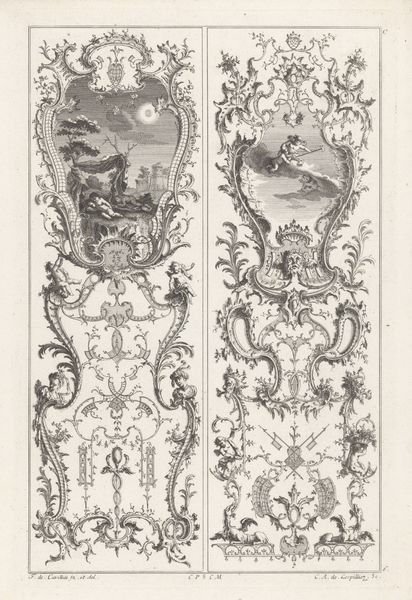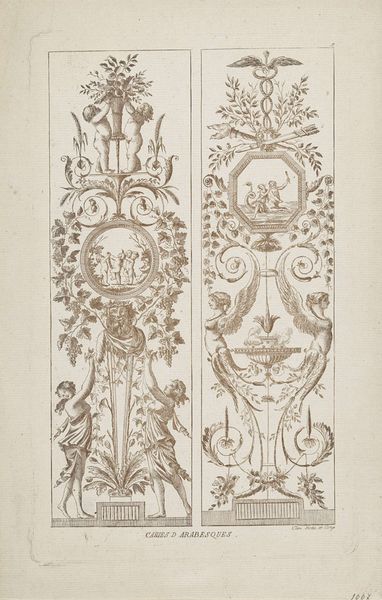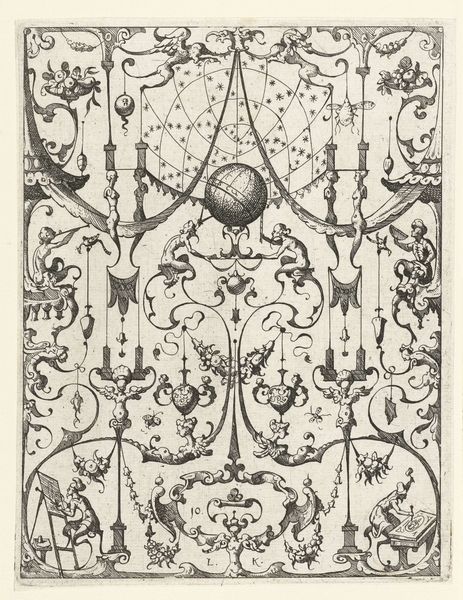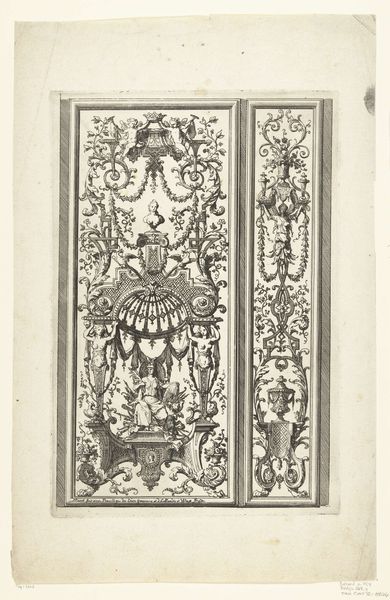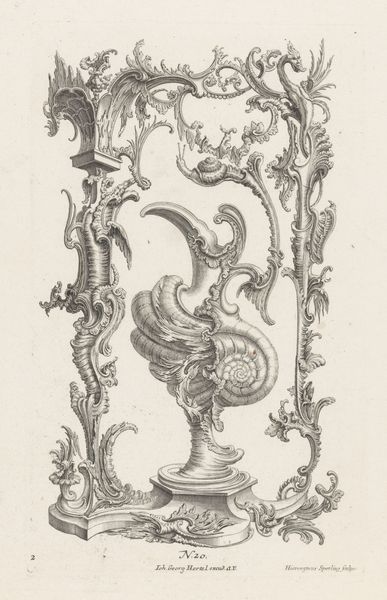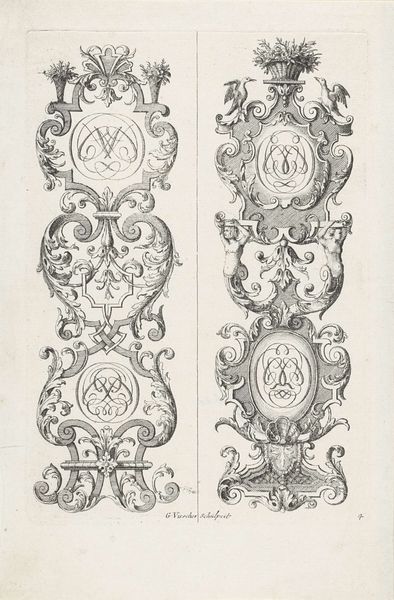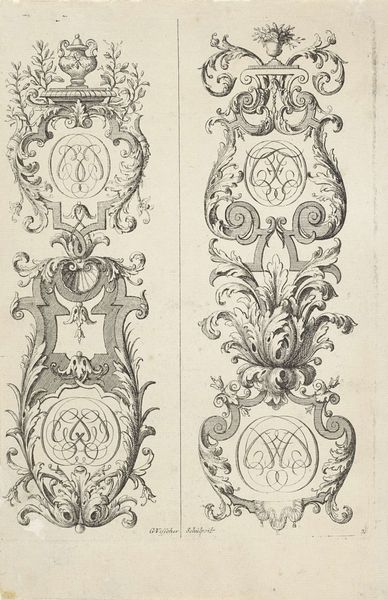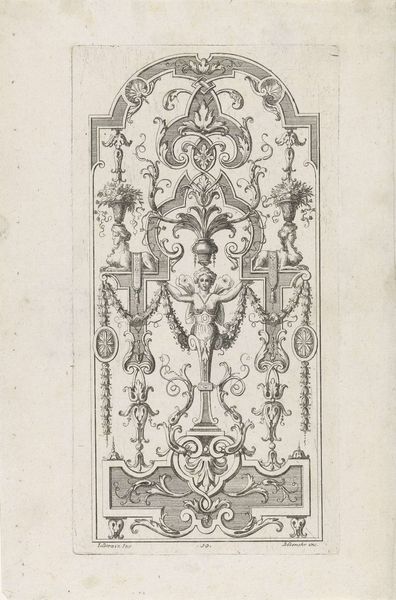
engraving
#
baroque
#
figuration
#
line
#
history-painting
#
decorative-art
#
engraving
Dimensions: height 368 mm, width 240 mm
Copyright: Rijks Museum: Open Domain
Editor: This is “Panelen met putti spelend en met doek,” panels with playing putti and cloth, made around 1745 by Carl Albert von Lespilliez. They are engravings. The detail is astonishing. What catches your eye in this baroque design? Curator: Immediately, I see how these panels represent the public role of art during the mid-18th century. Engravings like this were often reproduced and disseminated widely. So, these panels weren’t necessarily meant to be unique art objects, but rather patterns or models intended to influence decorative schemes of wealthy patrons. Editor: So, you're saying it’s like wallpaper before wallpaper, sort of a mood board for the elite? Curator: Precisely! Notice how the putti, or cherubic figures, engage in playful activities? Consider the socio-political implications of portraying leisure and abundance. The ruling classes utilized such imagery to project an image of prosperity and benevolent leadership. Editor: It is interesting to think of art not just as something beautiful but as a tool of social messaging. Were these engravings common? Curator: Relatively so, yes, particularly within certain artistic and social circles. And the 'line' style indicates a trend toward detailed replication; how many homes might have taken inspiration from von Lespilliez's baroque ornamentation through prints such as these? Editor: It almost makes the concept of "original" art a little blurry, doesn't it? Thinking of it as inspiration instead of something unique changes everything. Curator: Absolutely, and examining these historical reproductions prompts critical thinking on concepts like originality, authorship, and the mechanisms through which aesthetic preferences were formed. Consider the power structures that dictated whose artistic vision got circulated and whose did not. Editor: That gives me a lot to think about. I see it’s less about the beauty and more about the social story. Thank you for illuminating this. Curator: Indeed, I am pleased to learn more with you about its role and ripple effects in its original context.
Comments
No comments
Be the first to comment and join the conversation on the ultimate creative platform.
